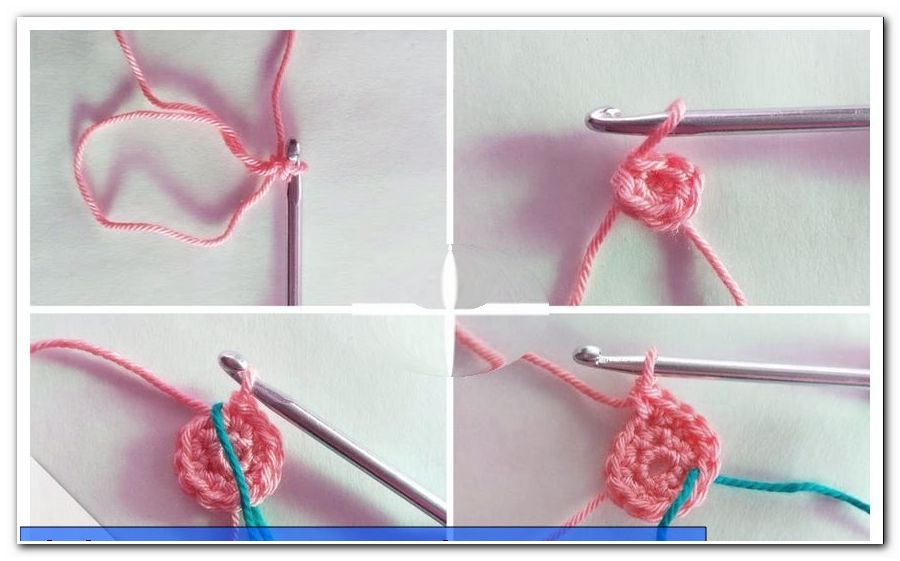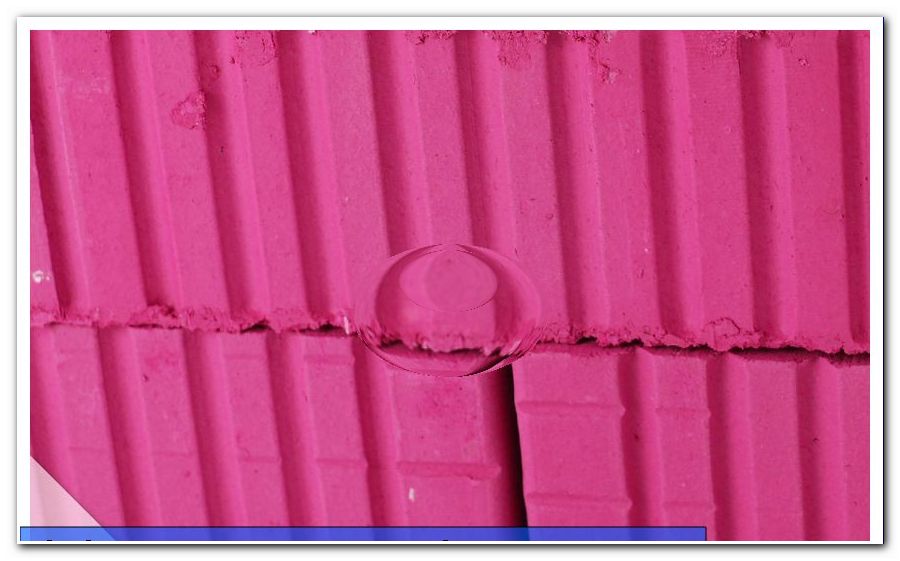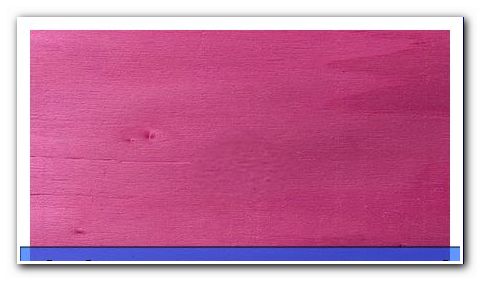Knit Raglan - Step by step instructions for beginners

- Material and preparation
- Raglan Calculator
- You need that
- Basics
- Knit raglan
- Quick start Guide
- Possible variations
A raglan sweater is knitted in one piece and has no annoying seams. This guide will guide you step by step how the technique works. A handy calculator helps you to determine the appropriate mesh size.
The sweater is ready knitted, but before the fitting is still sewing on. Annoying "> Material and preparation
You can use any yarn for your sweater. The appropriate needle size and care instructions can be found on the band. How much wool you need depends on the length of the run, that is, how many meters of yarn a 50 g ball contains. In addition, your dress size is crucial. For a pullover made of light yarn, 500 g can be enough, while one made of thick wool can weigh over one kilo. First orientation values are often noted on the banderole. The price also depends on the material. Synthetic yarns are significantly cheaper than natural products. For an acrylic yarn you have to pay 3-4 euros per 50 g-ball, for new wool 5 €.
The sweater is knitted from top to bottom in one piece without stitching. The easiest way is to knit smoothly on the right, that is to say alternately a row of right and left stitches and only on the right in rounds. This allows you to focus on the increases. First of all you have to calculate how many stitches you need in the beginning to make the sweater fit. This calculator helps you: Raglan calculator
Raglan Calculator
The calculator needs three inputs.
1. The stitching: Make 22 stitches with the yarn of your choice and knit at least five centimeters. Then measure how wide 20 stitches are. You do not include the edge stitches, because they are often looser and falsify the result.
2. Neck circumference: Loosely place the measuring tape around your neck. Add to the measurement result two centimeters, so that the sweater fits comfortably over the head.
3. The number of raglan lines: These lines are characteristic of the technique and run diagonally from the neck down to the armpit. Usually they are one to four stitches wide. You decide for yourself how many stitches you want to knit your lines.
You need that
- Wool in sufficient quantity
- Pair of knitting needles in matching thickness
- Circular knitting needles of equal strength
- Six stitch markers or short wool threads in two different colors
- Two fast motion or big safety pins

Tip: Circular needles are connected with a plastic cord. This adapter is available in different lengths. 80 to 90 centimeters are suitable for a sweater. For the sleeves you need 30 to 40 centimeters or a needle play with five needles.
Basics
Along the raglan lines, the stitches are increased. For that there are different possibilities:
envelopes

Lay the thread once over the right needle from the front to the back. In the next row, knit the envelope like a normal stitch. Along the line, a decorative lace pattern is created.

Entangled mesh
If you do not want any holes, knit the envelope in the next row. To do this, insert into the back of the mesh instead of the front as usual.
Double stitches
Instead of an envelope, you can double a stitch. To do this work the stitch as usual, but do not let it slip off the left needle. Knitted again. With this method also no holes are created.
Knit raglan
To determine how many meshes you need, calculate the results of the calculator:
Number of stitches back + 4 x number of stitches Raglan-line + 2 x number of stitches per sleeve + 3
Hit the stitches.

Then apply markings in two colors between the stitches according to the following scheme. Start at the top of the knitting needle.
- 1 stitch for the front, behind marked in color 1
- 1 stitch, behind mark in color 2
- Number of stitches sleeve + line, behind mark in color 2
- Number of stitches back + line, behind mark in color 2
- Number of stitches sleeve + line, behind mark in color 2
- Number of stitches line, behind mark in color 1
- 1 stitch

Knit two rows.

In the third row, take one stitch at each marker in color 1 and two at color 2.
Tip: Under the heading "Basics" you will find various options.
These increases repeat in every other row. At the markings in color 2, the raglan lines are created.

Knit the increases until you have reached the number of stitches in front of and behind the markers in color 1, which the calculator displays on the front left or right. You can then remove these two markers.
Close to the round. Slide the stitches on a circular needle.
Now look at the number of stitches that the front-end calculator returns. Close the work to the round.

Continue to knit in rounds, continuing to draw two stitches on each second color mark in every second round.
Tip: For smooth right in rounds, knit only right stitches.
Work the increases until the sweater reaches just below your armpits. The part of the work with the raglan lines is done!

Knit the remaining sweater
Rest the loops for the sleeves on two mesh rakers or safety pins. You can remove the markers afterwards. Instead of the resting stitches, hit new ones on each side as many as the calculator indicates with the number of stitches per sleeve. Continue to knit in circles until the sweater is long enough. For a stretchy cuff, work one stitch left and right in the last few turns.
For the first sleeve, pick up the disused stitches. In addition, you stab in the newly broken stitches below the armpit. Work in rounds, knitting two stitches every four rounds. Finish the work with a cuff as well. Knitt the second sleeve as well.
Tip: To knit two stitches, stitch in both and knit at the same time. After that you only have one more stitch.
Quick start Guide
1. Punch on the number of stitches determined by the calculator, place markings and knit two rows.
2. Add two stitches or one at a time along the raglan lines and on both sides of the front piece until the calculated number of stitches for the front piece is reached.
3. Make new stitches for the middle of the front piece and continue in rounds. Increase along the lines until the sweater has reached armpit height.
4. Close the stitches for the sleeves, including the number of stitches as calculated. Knit to the desired length of the sweater without any increase.
5. Grasp abandoned and newly struck stitches and knit sleeves into rounds, knitting two stitches in every fourth row.
Possible variations
1. Knitting the stitches of the lines on the left to accentuate them. This will give you small nodules instead of the flat V-shaped mesh.
2. Take the stitches of the neckline again and knit a turtleneck. Well suited for this is the pattern you used for the cuffs.
3. Elaborate knitting patterns are difficult to achieve in a raglan sweater due to the unfamiliar top-to-bottom knitting direction and the changing mesh sizes. Mottled wool, a yarn with gradient or stripes give your pullover whistle. Alternatively, you can embroider motifs on the finished fabric.




